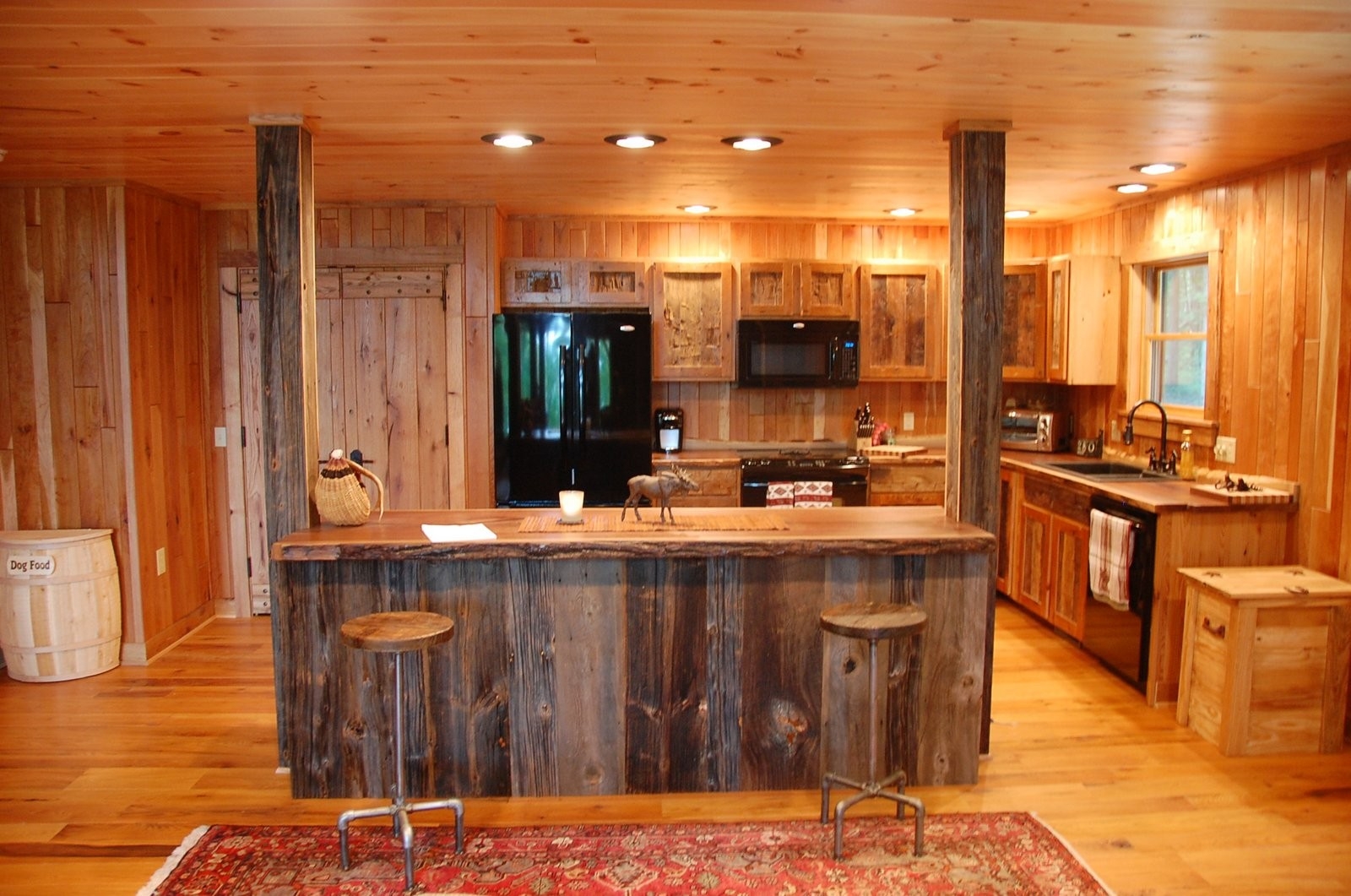Materials and Finishes

Choosing the right materials and finishes for your kitchen cabinets is a crucial decision that impacts both the functionality and aesthetics of your kitchen. These elements influence the overall look and feel of your kitchen, as well as its durability and longevity.
Wood Types, Wooden kitchen cabinets designs
The type of wood used for your kitchen cabinets plays a significant role in their appearance, durability, and price. Here are some popular wood choices:
- Maple: Known for its hardness, durability, and light, creamy color. Maple is a popular choice for kitchen cabinets due to its resistance to scratches and dents. It can be stained to achieve a variety of finishes, from warm honey tones to rich, dark browns.
- Cherry: Cherry wood is prized for its warm reddish-brown color and beautiful grain patterns. It is a relatively soft wood, but it is known for its durability and resistance to moisture. Cherry wood darkens naturally over time, giving it a rich, aged look.
- Oak: Oak is a strong and durable hardwood that is known for its distinctive grain pattern. It is available in a variety of colors, from light blonde to rich brown. Oak is a good choice for kitchen cabinets because it is resistant to scratches and dents.
- Walnut: Walnut is a luxurious hardwood with a rich, dark brown color and distinctive grain patterns. It is known for its durability and resistance to moisture. Walnut is often used for high-end kitchen cabinets, as it adds a touch of elegance and sophistication to any kitchen.
- Alder: Alder is a softer wood that is known for its smooth, consistent grain pattern. It is a popular choice for kitchen cabinets because it can be stained to achieve a variety of finishes. Alder is also a relatively affordable wood, making it a good option for budget-conscious homeowners.
Wood Finishes
The finish you choose for your kitchen cabinets will determine their overall appearance and durability. Here are some popular wood finishes:
- Paint: Paint is a versatile finish that can be used to create a wide range of looks, from classic white to bold colors. Paint can also be used to cover up imperfections in the wood.
- Stain: Stain is a finish that penetrates the wood, enhancing its natural color and grain patterns. Stains are available in a variety of colors, allowing you to customize the look of your cabinets.
- Lacquer: Lacquer is a clear, protective finish that is applied over paint or stain. Lacquer provides a durable, glossy finish that resists scratches and moisture.
Pros and Cons of Materials and Finishes
Here’s a breakdown of the pros and cons of different materials and finishes for kitchen cabinets:
- Maple:
- Pros: Hard, durable, light color, versatile staining options.
- Cons: Can be expensive, may show scratches over time.
- Cherry:
- Pros: Beautiful color, rich grain patterns, darkens naturally over time.
- Cons: Relatively soft, can be expensive.
- Oak:
- Pros: Strong, durable, distinctive grain patterns, affordable.
- Cons: Can be heavy, may require more maintenance.
- Walnut:
- Pros: Luxurious, rich color, distinctive grain patterns, durable.
- Cons: Very expensive, can be difficult to find.
- Alder:
- Pros: Smooth, consistent grain pattern, affordable, versatile staining options.
- Cons: Soft, may scratch easily.
- Paint:
- Pros: Versatile, can cover imperfections, easy to clean.
- Cons: Can chip or scratch, may require frequent touch-ups.
- Stain:
- Pros: Enhances natural wood color and grain patterns, creates a warm and inviting look.
- Cons: Can be difficult to apply evenly, may not be as durable as paint.
- Lacquer:
- Pros: Durable, glossy finish, resists scratches and moisture.
- Cons: Can be expensive, may require professional application.
Design Considerations: Wooden Kitchen Cabinets Designs

Designing a kitchen involves careful consideration of various factors, including layout, functionality, and aesthetics. Kitchen cabinet layout plays a crucial role in maximizing space utilization, improving workflow, and creating a visually appealing environment.
Kitchen Cabinet Layouts
Kitchen cabinet layouts can significantly impact the functionality and aesthetics of a kitchen. Here’s a comparison of popular layout options:
| Layout | Description | Advantages | Disadvantages |
|---|---|---|---|
| U-shaped | Three continuous runs of cabinets forming a U-shape, often with a peninsula or island in the center. |
|
|
| L-shaped | Two runs of cabinets forming an L-shape, often with a peninsula or island extending from one side. |
|
|
| Galley | Two parallel runs of cabinets along opposing walls, creating a narrow walkway. |
|
|
| Island | A freestanding unit in the center of the kitchen, often with cabinets and a countertop. |
|
|
Popular Kitchen Cabinet Designs
Each layout option offers a variety of design choices, reflecting different styles and preferences.
U-shaped
* Traditional: Features classic details like raised panel doors, crown molding, and ornate hardware.
* Contemporary: Emphasizes clean lines, sleek surfaces, and minimalist hardware.
L-shaped
* Transitional: Blends traditional and contemporary elements, creating a balanced and timeless look.
* Modern: Features bold geometric shapes, high-gloss finishes, and integrated appliances.
Galley
* Rustic: Incorporates natural materials like wood and stone, with distressed finishes and exposed beams.
* Industrial: Features metal accents, open shelving, and reclaimed wood elements.
Island
* Farmhouse: Characterized by warm wood tones, distressed finishes, and open shelving.
* Mid-century Modern: Features clean lines, tapered legs, and warm wood tones.
